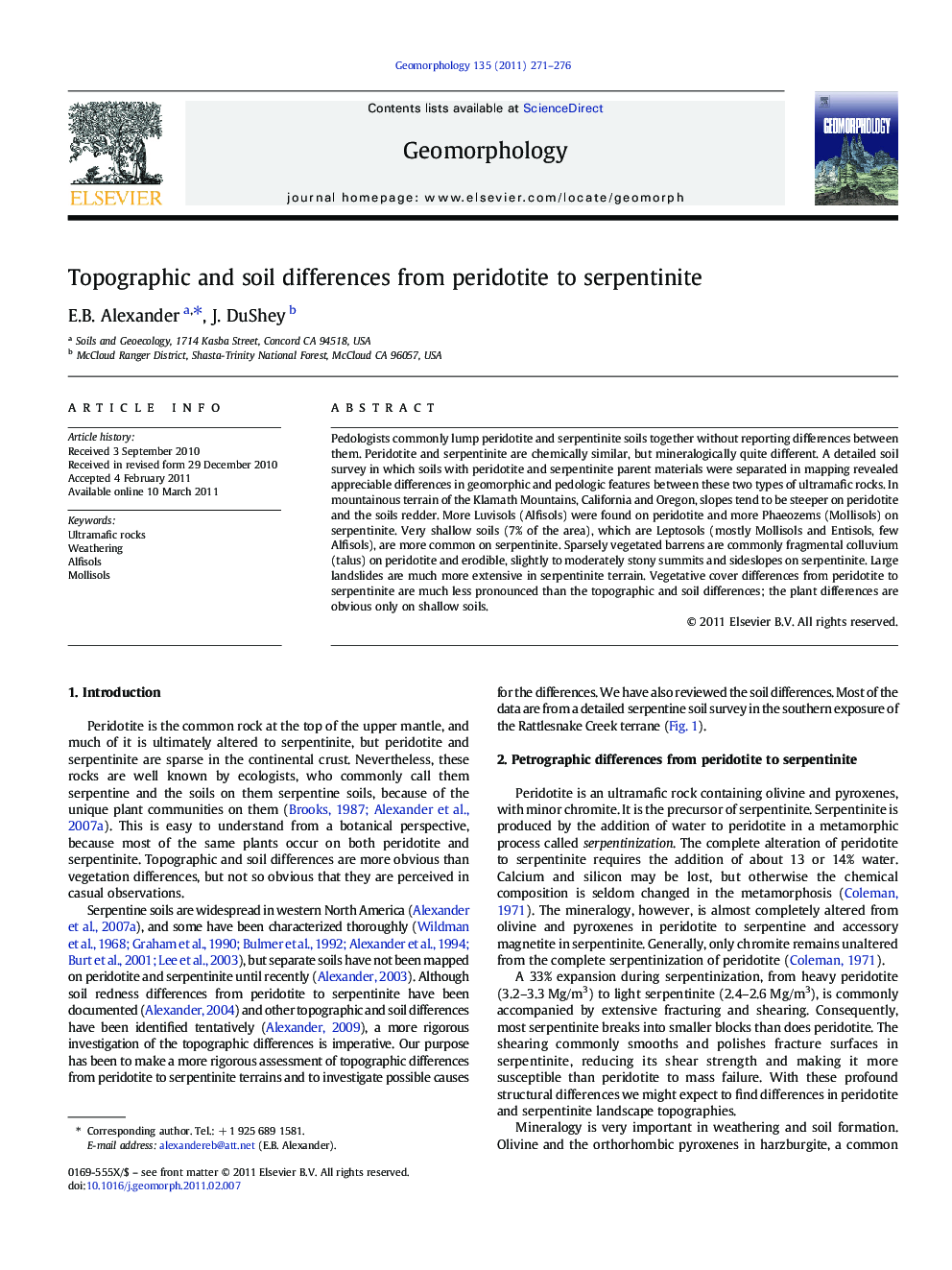| Article ID | Journal | Published Year | Pages | File Type |
|---|---|---|---|---|
| 4685415 | Geomorphology | 2011 | 6 Pages |
Pedologists commonly lump peridotite and serpentinite soils together without reporting differences between them. Peridotite and serpentinite are chemically similar, but mineralogically quite different. A detailed soil survey in which soils with peridotite and serpentinite parent materials were separated in mapping revealed appreciable differences in geomorphic and pedologic features between these two types of ultramafic rocks. In mountainous terrain of the Klamath Mountains, California and Oregon, slopes tend to be steeper on peridotite and the soils redder. More Luvisols (Alfisols) were found on peridotite and more Phaeozems (Mollisols) on serpentinite. Very shallow soils (7% of the area), which are Leptosols (mostly Mollisols and Entisols, few Alfisols), are more common on serpentinite. Sparsely vegetated barrens are commonly fragmental colluvium (talus) on peridotite and erodible, slightly to moderately stony summits and sideslopes on serpentinite. Large landslides are much more extensive in serpentinite terrain. Vegetative cover differences from peridotite to serpentinite are much less pronounced than the topographic and soil differences; the plant differences are obvious only on shallow soils.
